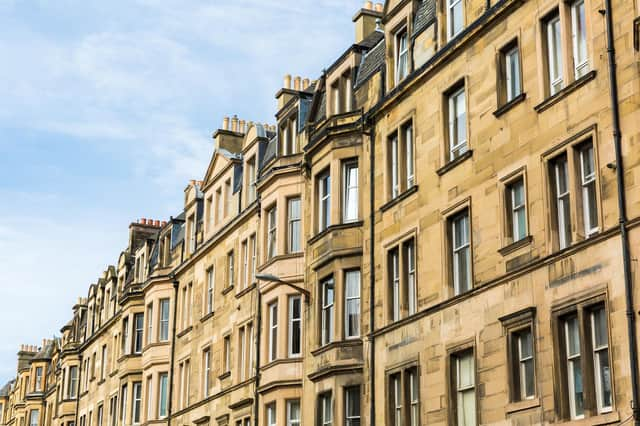Cost of living crisis: Seven areas in Scotland see above-inflation rent rises


In the year up to the end of September, statistics released by the Scottish Government have shown that the average rents have risen in 17 out of the 18 regions of Scotland, with the highest of those rises coming in South Lanarkshire (10.3%).
Compared to the average inflation rate in the UK over the past year - 7.6% - six other areas saw above-inflation increases; Forth Valley (8.7%), North Lanarkshire (8.3%), West Dunbartonshire (8.3%), East Dunbartonshire (8.2%), Dundee and Angus (8.0%) and Greater Glasgow (7.7%).
Advertisement
Hide AdAdvertisement
Hide AdIn total, Scotland's average rent rose by 6.7% across the country.
The figures have revealed how the private rented landscape appeared before the Scottish Government's emergency legislation was enacted to tackle the cost-of-living crisis and its impact on the rental sector.
The Cost of Living (Tenant Protection) Bill froze rents and placed a moratorium on evictions until at least the end of March, with the option to extend the legislation for two further six-month periods.
The Lothian region, which contains Edinburgh, has been shown to have the highest average rents in the country at £1,006 per month, followed by Greater Glasgow at £858.
Dumfries and Galloway's average rent for a two-bedroom home was revealed as the lowest in the country at £480, followed by the Ayrshire regions at £493.
The figures also gauged the changes in rents since 2010, with Glasgow rents rising cumulatively by 52.3% and Lothian's by 51.5% - above the cumulative inflation rate of 33.7%.
Forth Valley, Fife and East Dunbartonshire also showed an above inflation increase during that time.
While rents in Aberdeen and Aberdeenshire (3.1%) and the Ayrshires (6.1%) saw the lowest average increase in the past 12 years.
Advertisement
Hide AdAdvertisement
Hide AdTenants rights minister Patrick Harvie said that the figures were "yet more evidence" of the need to bring rent down in Scotland.
"That is why we took urgent action to introduce emergency legislation to protect renters," he said.
"Our Cost of Living (Tenant Protection) Act is providing immediate protection to many tenants who may have faced in-tenancy rent increases during the cost-of-living crisis
"The Tenant Protection Act has given reassurance to renters by temporarily freezing rents and introducing a moratorium on the enforcement of evictions, initially to March 31.
"We have also allocated almost £3 billion in this financial year that will help mitigate the increased cost of living."
The minister added: "But I also know the rental sector needs longer-term reform and that is why our new deal for tenants sets out proposals to deliver long-term rent controls by 2025 and to raise quality and standards in renting - aiming to make sure all tenants enjoy a good experience and recognising the good work of those landlords who provide it.
"Our action contrasts starkly with the UK Government's decision to freeze Local Housing Allowance rates for the third year running at 2020 levels.
"That is another real-terms cut which will only further exacerbate the situation for Scotland's renters, making some areas unaffordable for those in receipt of housing benefit or universal credit."
Comments
Want to join the conversation? Please or to comment on this article.